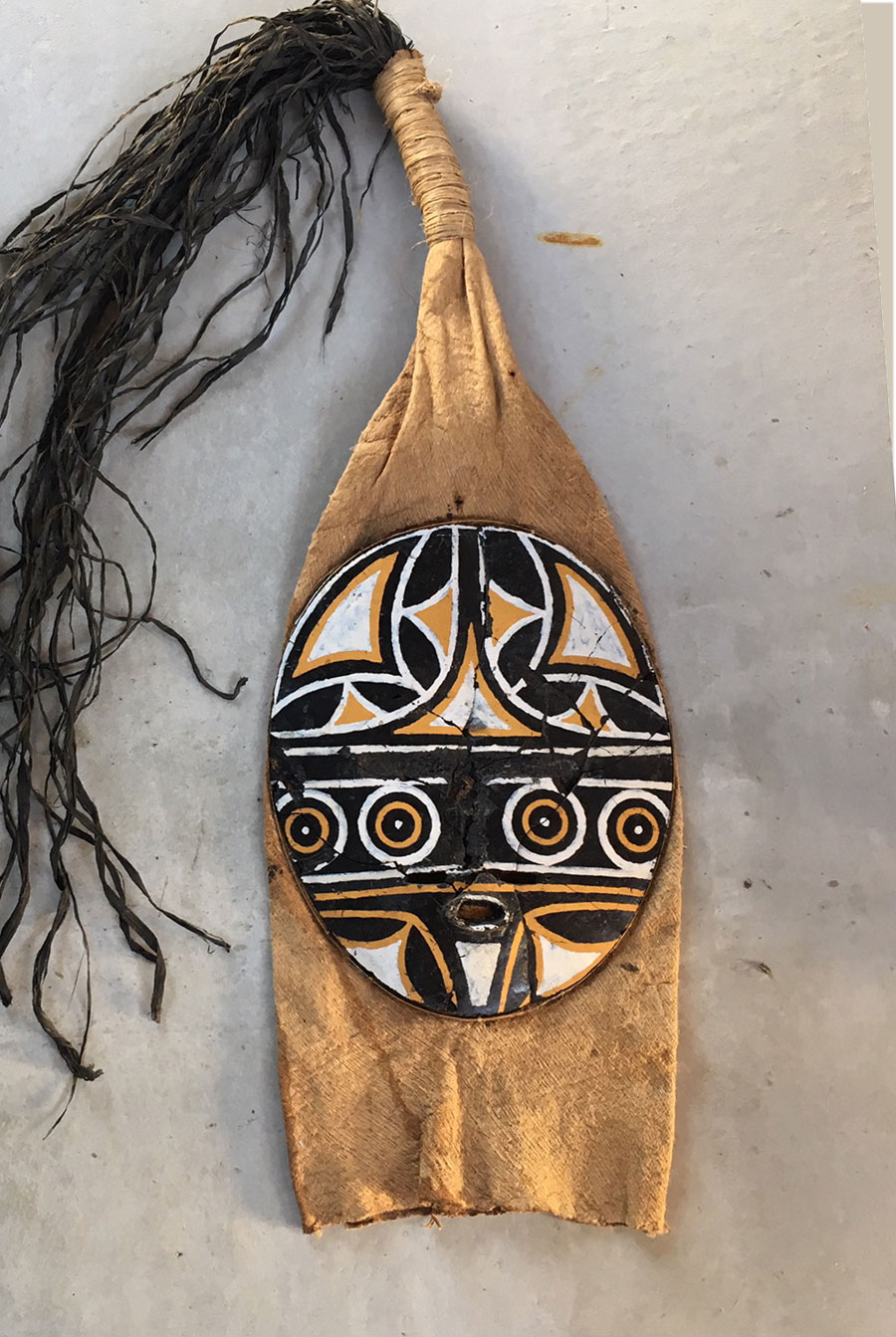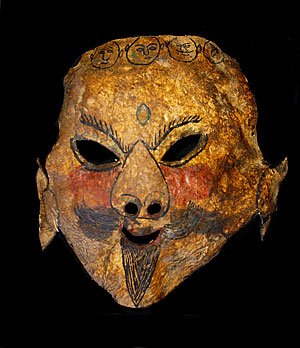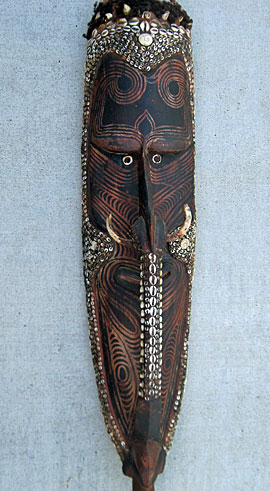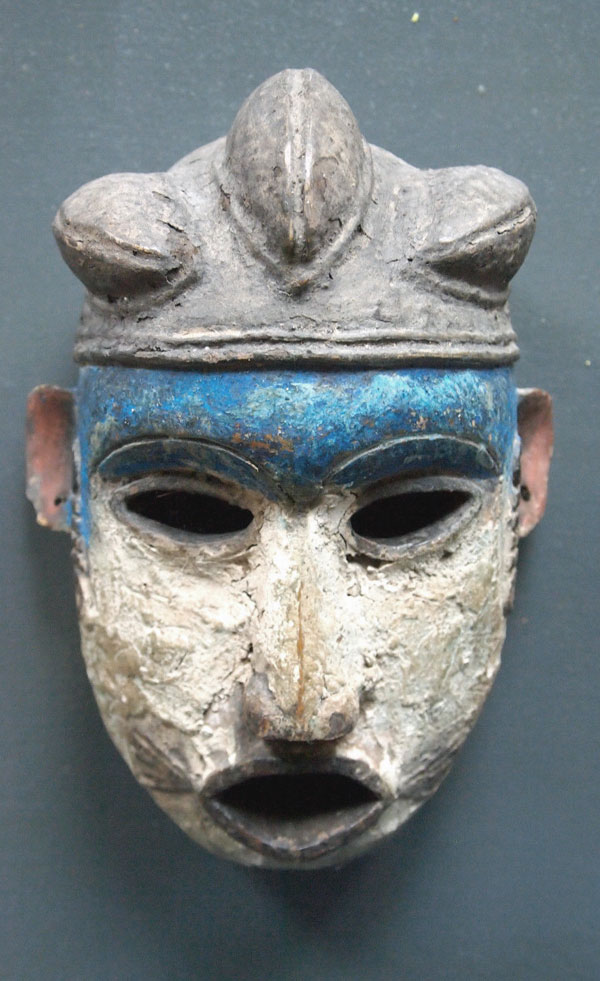 Q: I’m really just interested in the mask details as it’s really cool but heavily damaged. There really is no side as the mask is flat so I did a wide front, tight front and back. The hood appears to be very tightly woven burlap of some kind; possibly two or more layers of weave pressed together. I believe the mask is a very low temperature clay of some kind as it’s fairly brittle. There may be hairs in the clay. The clay appears to be coated with at least one layer of base coat before being painted over; possibly for smoothing or structure or simply color. There is a narrow wooden ring around the mask which is used to tie the mask to the hood with what appears to be a plant material based string. The top of the hood is wrapped with a 1/4″ wide grass reed. It appears the grass reeds dangling loosely from the top are the same grass but died black-conjecture only.The stitching tying the hood together in the back appears to be a grass reed but could be plant based string of some kind. Right above the mouth and below the inner circles are two slits that I assume are seeing eye slits. I am guessing there was a nose between the two inner circles from the damage. The damage also suggests there were long horizontal eyes glued on just above the inner circles. I have done a pretty long internet search with no results of similarity. The Teke masks are as close as I have found in painting style and painting on flat round mask bases but nothing incorporating a hood. Thanks, Jim, 1596
Q: I’m really just interested in the mask details as it’s really cool but heavily damaged. There really is no side as the mask is flat so I did a wide front, tight front and back. The hood appears to be very tightly woven burlap of some kind; possibly two or more layers of weave pressed together. I believe the mask is a very low temperature clay of some kind as it’s fairly brittle. There may be hairs in the clay. The clay appears to be coated with at least one layer of base coat before being painted over; possibly for smoothing or structure or simply color. There is a narrow wooden ring around the mask which is used to tie the mask to the hood with what appears to be a plant material based string. The top of the hood is wrapped with a 1/4″ wide grass reed. It appears the grass reeds dangling loosely from the top are the same grass but died black-conjecture only.The stitching tying the hood together in the back appears to be a grass reed but could be plant based string of some kind. Right above the mouth and below the inner circles are two slits that I assume are seeing eye slits. I am guessing there was a nose between the two inner circles from the damage. The damage also suggests there were long horizontal eyes glued on just above the inner circles. I have done a pretty long internet search with no results of similarity. The Teke masks are as close as I have found in painting style and painting on flat round mask bases but nothing incorporating a hood. Thanks, Jim, 1596
A: The overall shape and materials of construction suggest the Amazon. My guess would be one of the Xingu River tribes of central Brazil. I’m not sure because I’ve never seen that face design or such bright colors used… except for the Teke masks of central Africa. For years many of the Amazon tribes have sold some of their ceremonial masks to wealthy tourists. This could be a more recent version of that. Who knows, the Indians may have smart phones and books in their villages now.
Despite the damage, this mask is a great piece to display, and you have a good story to tell. B+





3 Comments
Mike Lee
The Modern Amazon Indian mask is Makuna Indian from Colombia. Quite rare.
Jim Ward
Thanks Mike Lee! I very much appreciate the help.
Jim
Victor Barac
Yes, Mike Lee is correct. It is from the Macuna of Columbia. Made from peach palm bark.